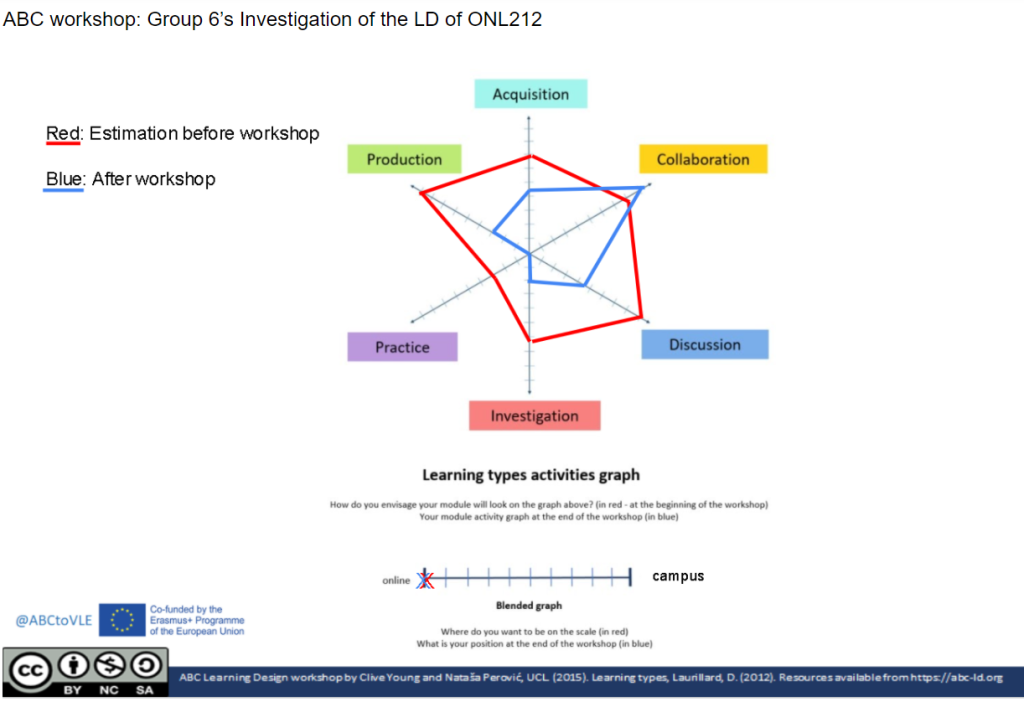Topic 4 in the ONL course was about “Design for online and blended learning” and our PBL group started discussing the effects of the Covid-19 pandemic on teaching and learning. Some examples of questions that were raised within group members regarding this topic:
- Knowledge increased regarding new tools during this period, but are they all pedagogical or just practical for teachers?
- Has it come to a point where flexibility trumps community? Or maybe connecting is not about space and place anymore?
- How can we help faculty members who do not have the skillsets to level-up, especially on blended learning approaches?
- How can we help students to be more self-directed so that they can make the best use of online learning?
- Is blended learning or online learning for everyone?
All of these questions are relevant, when approaching blended learning, but in my reflection, I will focus on one of the questions above. This question was raised by a fellow member in my group and is about how we can support our fellow coworkers with blended learning approaches. But first to the basics:
What is blended learning?
When I started my teaching as a university lecturer, I got to study a course in pedagogy for higher education. One of the books was Vaughan, Cleveland-Innes and Garrisons (2013) book on teaching in blended learning environments. The authors define blended learning as “the organic integration of thoughtfully selected and complementary face-to-face and online approaches”. According to Vaughan et al (2013) it is more than just adding an online feature to the course, it is about changing the way we approach teaching. Therefore, blended learning can engage students that struggle with learning in a physical classroom by exposing students to different forms of teaching typologies.
What are the differences between blended learning and hybrid learning?
When talking about how blended learning differs from hybrid learning, it can be described that blended learning is tactical – so it is the practical side meanwhile, hybrid learning is strategic, or more of a methodological approach (ViewSonic 2021).
The beauty of blended learning is the endless possibilities of choosing tools to design your teaching. As every PBL group needs to hand in their reflections in some format, our group decided on trying out the ABC method that was developed by Clive Young and Nataša Perović in 2014. This was especially interesting for me to dive in to, since another book that was used in the above-mentioned course for higher learning was “Teaching as a Design Science” (2012) by Diana Laurillard. The ABC model builds on Laurillards thouhts in that book and the six learning types of how students learn (Conversational Framework). The ABC method places the student in the center of the reflection and choices of activities that aim to better guide the students´ learning (ABC Learning Design).
So one method that could be used to help out fellow teachers in their curriculum development could be the ABC method. This is what ABC Learning Design homepage (see link in references) says about the method:
“Assessment methods, cross-program themes and institutional policies are all integrated into the process. The key to this approach is pace, engagement and collaboration. ABC has been found particularly useful for new programmes or those changing to an online or more blended format. The approach generates high levels of engagement, and stimulates creative informed dialogue and group reflection about curriculum design among even time-poor academics”.
Since the method is easiest described by watching the videos on ABC Learning Designs webpage, I will not go into specifics, but of course show how our own chart looked like after the “workshop”.

As a final reflection, I do feel that the ABC model does not prioritize reflection, nor feedback, which could be incorporated more in the model. Still, if one reflects upon the quote above – time does fly and sometimes a shorter workshop might do more good, than no reflection at all- or what are your thoughts on the matter?
References:
ABC Learning Design – Sprint design your courses and programs in just 90 minutes (abc-ld.org)
Cleveland-Innes, M. & Wilton, D. (2018). Guide to Blended Learning. Burnaby: Commonwealth of Learning.
Laurillard, D. (2012). Teaching as a Design Science: Building Pedagogical Patterns for Learning and Technology. New York and London: Routledge.
Vaughan, N. D., Cleveland-Innes, M., & Garrison, D. R. (2013). Teaching in blended learning environments: Creating and sustaining communities of inquiry. Edmonton: AU Press.
ViewSonic (2021). What is Hybrid Learning? Available at: https://www.viewsonic.com/library/education/what-is-hybrid-learning/